Real Madrid's tactical flexibility allows for success in multiple ways
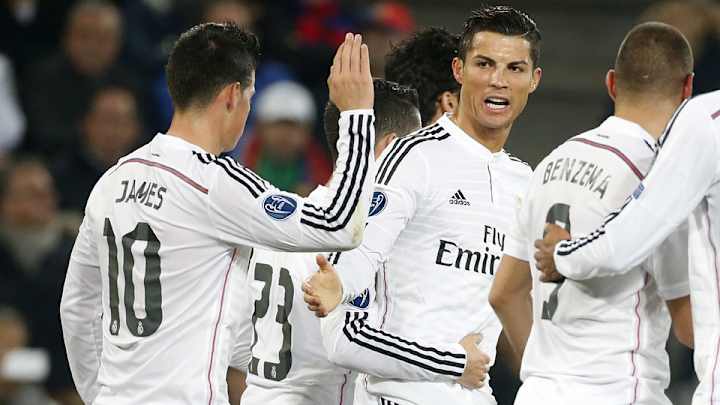
Real Madrid’s recent dominance culminates in the club’s first chance to win the FIFA Club World Cup on Saturday. In brushing off Cruz Azul, 4-0, in the semifinals, Real again showed its versatility as likely the most complete team in the world.
Club president Florentino Pérez and his philosophy of buying the best talent available fits with manager Carlo Ancelotti’s tactical flexibility. Ancelotti has a swath of individual talent at his disposal that ensures minimal need for overarching structure in attack.
Of course, as a disciple of famous AC Milan tactician Arrigo Sacchi, Ancelotti would never be able to eschew defensive discipline. A staunch 4-4-2 in defense gives way to a 4-3-3 hybrid in possession that allows free rein for devastating combinations and individual play in the final third.
Perhaps the most noteworthy aspect of Madrid’s structure is the lack of true defensive midfielders on the squad following Xabi Alonso’s departure. Toni Kroos took over as the organizer, pairing with Luka Modrić until the Croatian’s thigh injury, but he’s usually one of three playmaker types in midfield.
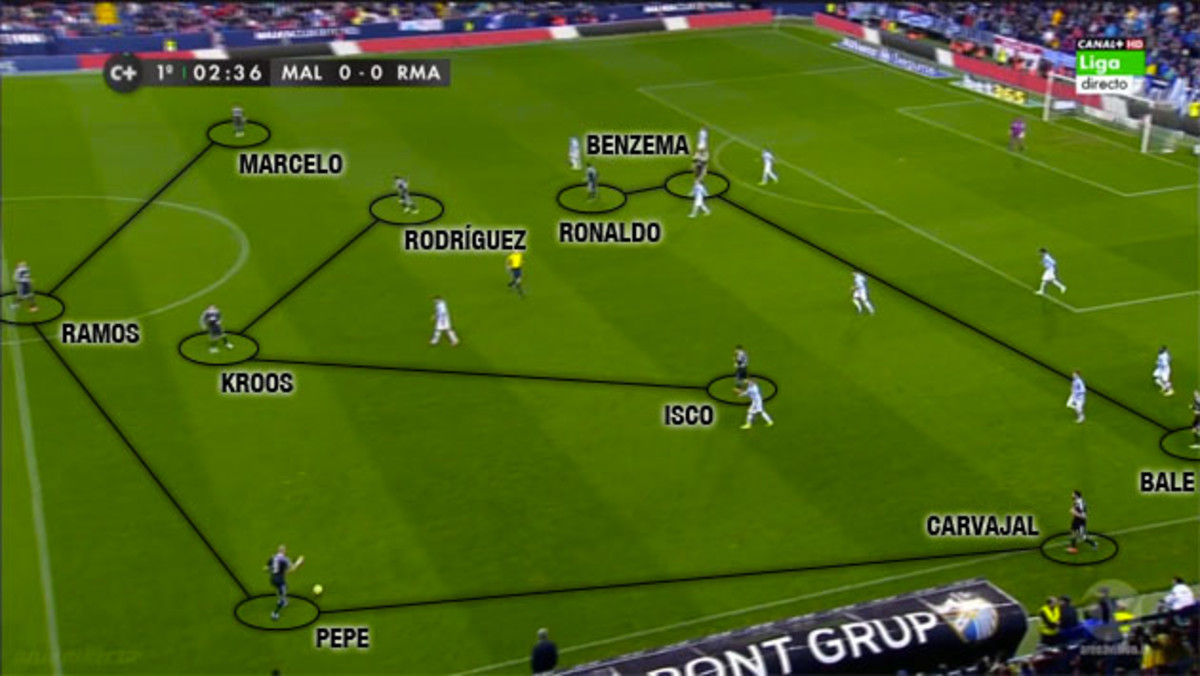
At AC Milan, Ancelotti turned Pirlo from an attacking midfielder into a deep-lying playmaker, but that team included destroyer Gennaro Gattuso as Ancelotti developed the Christmas tree formation that would dominate Europe in the mid-2000s and become the basis of his coaching philosophy.
Bielsa's tactics have Marseille competing for French glory again
The current system at Madrid is more like having three Pirlos and no Gattuso, and Ancelotti has abandoned the overly structured 4-3-2-1.
A selection of center backs strong in individual situations — Sergio Ramos, Pepe and Raphaël Varane — allows freedom for the playmakers in front, but the lack of a true No. 6 creates trouble between lines.
Opponents that overload the middle and play in the gap between defense and midfield can cause problems.
At times, Kroos gets drawn out of position to pressure higher up the field, leaving space for opposing playmakers. Barcelona and Lionel Messi found limited success in the first Clásico of the season, a 3-1 comeback win for Real, and Cruz Azul won a penalty by exploiting that space on Tuesday.
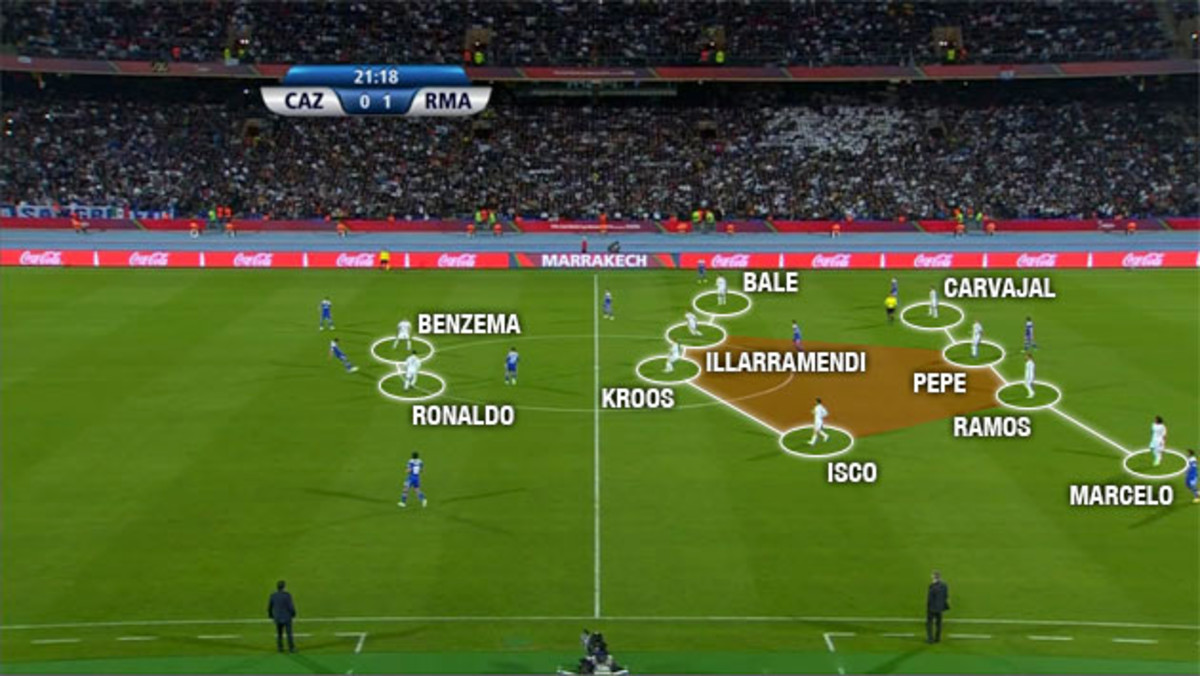
Kroos and Asier Illarramendi left a gap behind them and ahead of Ramos and Pepe, allowing Mauro Formica to drive forward and slip Mariano Pavone into the area, where Ramos took him down. Iker Casillas read and saved the penalty, preserving the clean sheet.
Inside the SuperClubs: Guardiola's tactics alter Bayern Munich's identity
That was one of Casillas’ brighter moments of the season, in which his 2013 decline has largely continued. Madrid signed Costa Rican World Cup hero Keylor Navas over the summer, but he hasn’t been given an extended opportunity yet.
The difficult politics of benching a club and national legend have kept Casillas, 33, as the starter for both Los Blancos and Spain despite slipping.
In the Champions League final, poor decision-making led to the opening goal that Real only just equalized in stoppage time on its way to La Décima. Against Málaga in November, he spilled a series of long-range shots.
Still, most opponents have enough trouble getting the ball into the final third that Casillas gets away with his missteps. Madrid’s mix of technical ability and physical prowess give it multiple methods of exerting control.
Germany's positive tactical approach rewarded with World Cup triumph
Real plays confidently out of the back, but when it needs to, it can play quickly vertical — both at incredible pace, deftly switching between the two over the course of a match.
The goal is to allow Gareth Bale, Cristiano Ronaldo and James Rodríguez the run of the final third, with others serving as facilitators. Intelligently timed, simple movements open spaces for teammates. When one goes, another arrives to fill the resulting gap.
Bale moves from wide to central, target striker Karim Benzema drifts to either wing and Ronaldo floats inside and across the width of the pitch. The central midfielders flatten or texturize to provide depth and facilitate ball circulation.
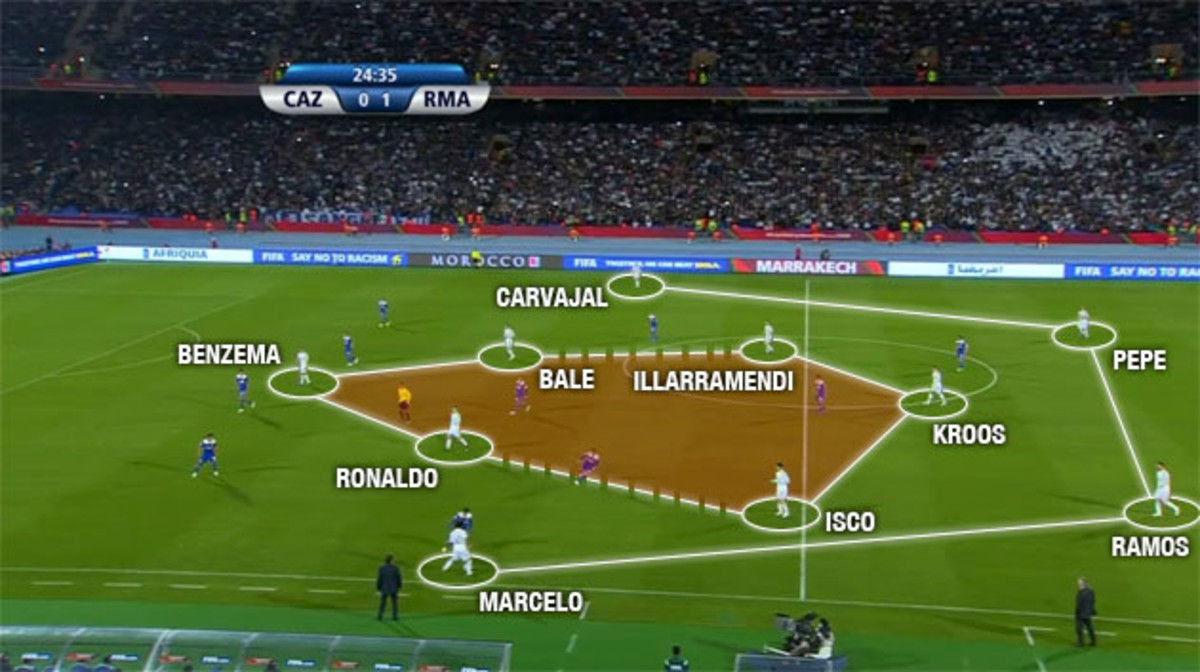
Technical, fast fullbacks bomb down the flanks to allow Bale, Ronaldo, Benzema and supporting midfielders to overload the middle. Marcelo has been especially impressive this year, taking over the freewheeling flank role vacated by Ángel di María. Both fly recklessly down the wing, cutting through defenders 1-on-1 and serving cross after cross into dangerous areas.
Often overshadowed, Benzema provides balance for Bale and Ronaldo. He’s strong enough to play as a target and finish balls into the penalty area and dynamic enough to fit into the larger team movements that open spaces for others to advance.
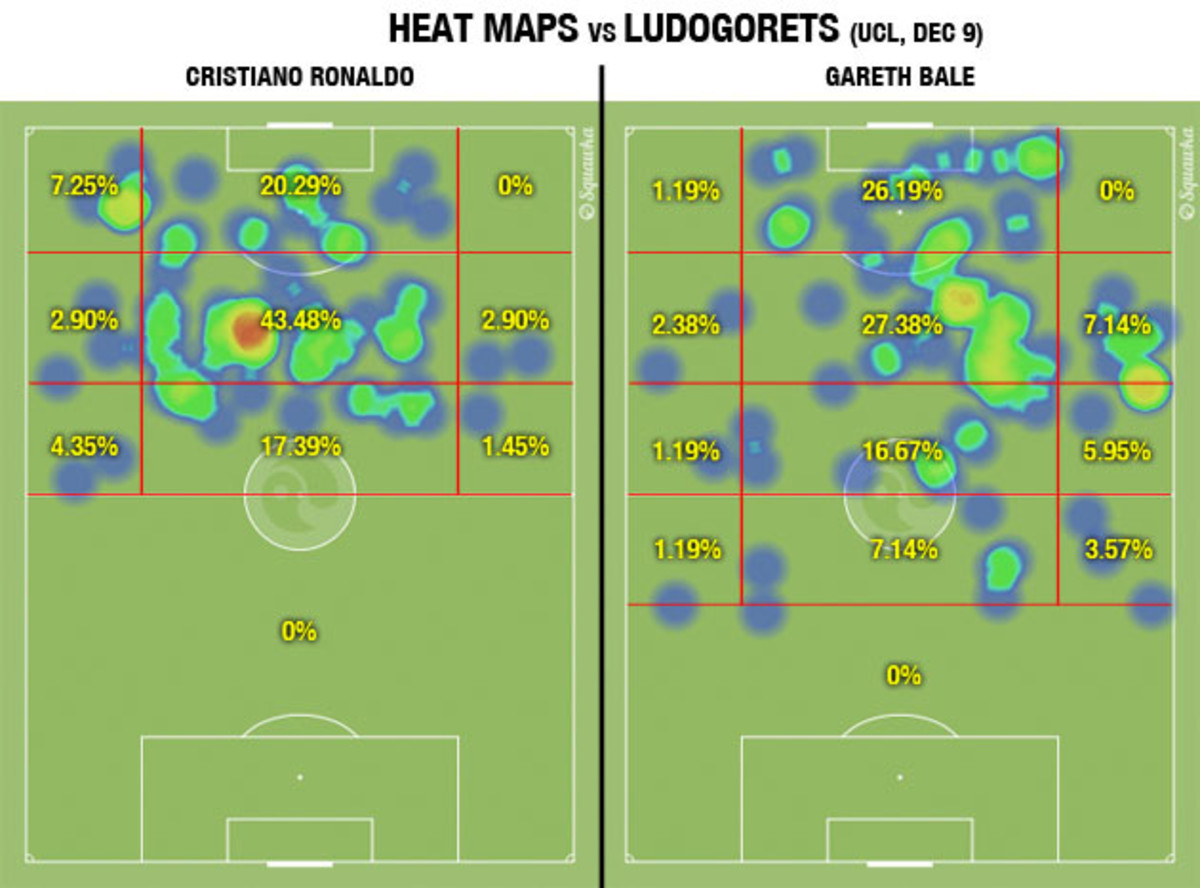
Bale plays between the midfield and forward lines, while Ronaldo stays higher and more central as an outlet. Ronaldo rarely works back, but counterattacks run through any of the three main attackers.
They overload centrally, pull wide to isolate 1-on-1 against opposing fullbacks or combine with teammates overlapping to create 2-on-1s or serve into the penalty area. This is where Ancelotti steps back; additional structure or coaching would interfere more than facilitate.
Madrid has dominated nearly every match this season after a bumpy start in which it lost the Spanish Super Cup to Atlético and early league matches to Real Sociedad and Atléti. The chants of “olé” ringing the stadium against Cruz Azul told a story the statistics corroborate: Real is a possession-oriented team.

On just four occasions this year has Madrid held less than 50 percent possession. While Barcelona is known for its short-passing philosophy and clearly plays more short and medium passes, Madrid’s long-ball numbers are comparable. This is despite being likely the best counterattacking team in Europe.
It all adds up to a near-flawless win machine that breaks records on a seemingly weekly basis. After a 4-0 result over Ludogorets on Dec. 9 in the Champions League, Madrid set a new Spanish record with its 19th consecutive win in all competitions. Before Saturday’s Club World Cup final against San Lorenzo, that number is up to 21 straight victories.
One more win would secure the tag of world champion, and it would be the team’s 51st victory in competitive matches this calendar year. Even without it, Real Madrid would close out 2014 as the hottest team across the globe.
